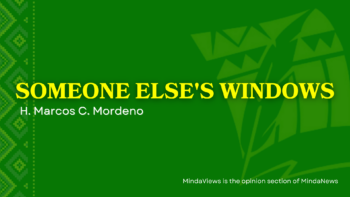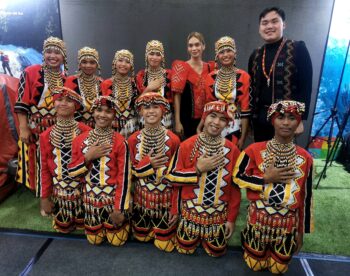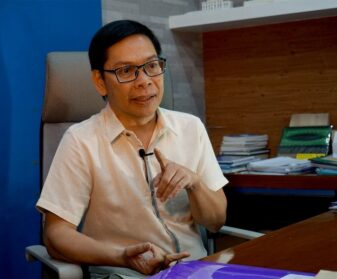
March 1, Araw ng Dabaw, happens to be the birth anniversary of the late Davao-born National Artist for Visual Arts, Ang Kiukok. This could’ve been a double celebration of sorts, but not every Dabawenyo recognizes Ang Kiukok.
Given that today’s generation is caught with pop culture and Facebook, ask them who Ang Kiukok is, they might reply with: Koreano na nga artista? Dili, tisoy na nga aktor pareho ni Enchong. Basin negosyante nga Insik o operator sa sabong.
There are efforts in every Araw ng Dabaw festivity to highlight Davao’s history and prominent personalities, but somehow the attention of the city and the public is more on the pomp, pageant, parade and pop culture in this event.
Don’t we know that there are two National Artists with roots from Davao? Aside from Ang Kiukok, there is dancer-choreographer Agnes Locsin, National Artist for Dance. Somehow, there is little that the general public knows about these artists and their contribution to the arts. Even the Davao Chinese community has little efforts to acknowledge Ang Kiukok.
Perhaps it is a general perception that artists are outliers, and at times even branded as elitist. But this is where the need for education to bridge people, and especially from Davao, to the importance of art and culture as a mirror of our society.
Ang Kiukok’s life and art reflected the times and struggles of the Filipino people. His life was also a struggle to break stereotypes and become an artist of relevance. Born to a Chinese family in Davao, the only son with five sisters, Ang was expected to take over the family sari-sari store business, as this was the usual generational thing with Chinoys. But he defied that as he chose to pursue the arts, studying architecture at the University of Santo Tomas (UST), painted movie billboards in Manila. He won art contests as a student.
In his visit to New York in 1965 with his mentor Vicente Manansala exposed him to American art and poverty, which defined his art from thereon. Delving into abstract forms such as Expressionism and Cubism, which signifies a distortion of humanity, his art flourished during Martial Law, with art subjects portraying struggling workers, fisherfolk, solitary figures in pain and anger, still life of bare tables and basic meals such as fish. The colors of his paintings swing from muted black and white to fiery red.
When asked one time why he painted this way, he replied: “Look around you. So much anger, ugliness. And also madness.”
Ang’s works had been exhibited in Japan, Taiwan, Singapore, the Netherlands, Canada and the United States. Some of his paintings are in the collection of the Philippine National Museum, the Ateneo Art Gallery, the Cultural Center of the Philippines, and the National Historical Commission in Taipei.
He won prizes and awards, such as the Patnubay ng Kilinangan Award from Manila in 1976 and the Outstanding Alumnus of UST in 1978. Ang Kiukok was declared a National Artist in 2001. He passed away from cancer in 2005, survived by his wife and daughters who live in Quezon City.
Someone said that a place should be remembered by its history, and its culture. I hope in every festivity that Davao has, and even without festivities, there should be a remembering and education of the great artists it has produced to shape our memory and culture.
(MindaViews is the opinion section of MindaNews. Tyrone A. Velez is a freelance journalist and writer.)







